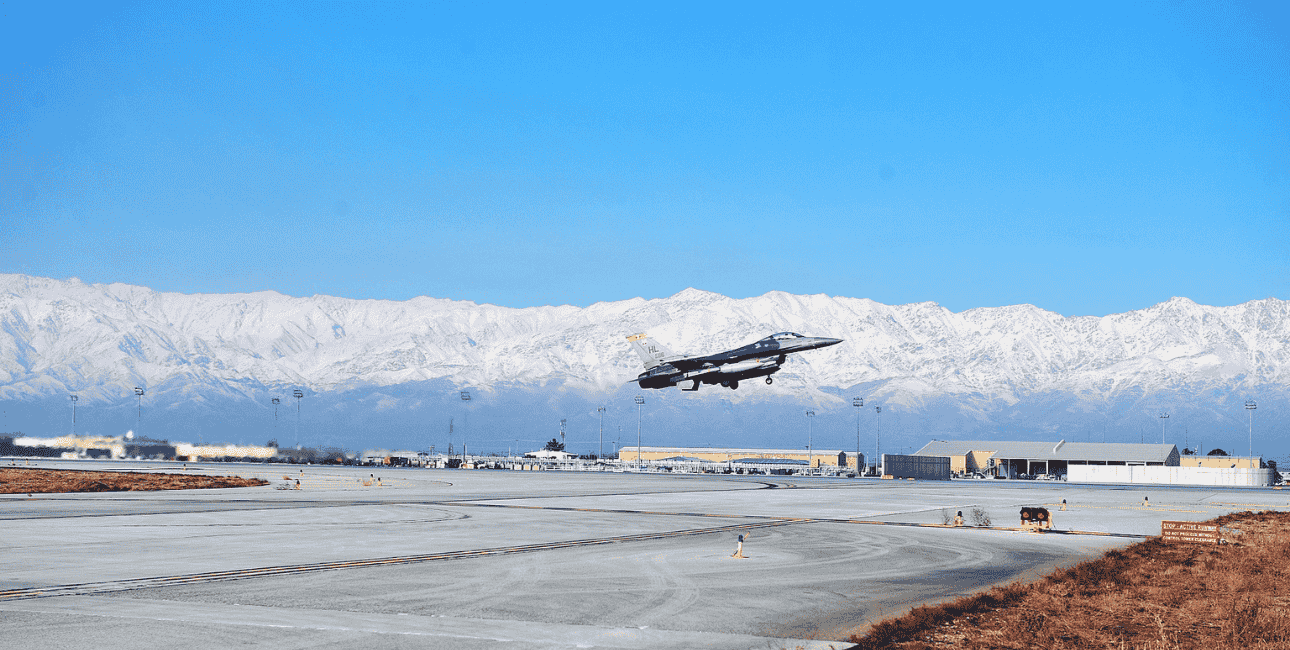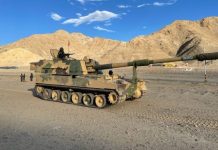United States President Donald Trump has declared his intention to return American forces to Afghanistan’s Bagram Airbase, claiming that “China now controls Bagram.”
About a month ago, Donald Trump suggested the US might return to Afghanistan, saying, “We are going to keep a small force on Bagram” to counter China’s growing influence.
Trump’s focus on Bagram is not merely about Afghanistan itself. “We wanted to keep this base because of China, not because of Afghanistan,” he explained, highlighting the airbase’s proximity to China’s nuclear facilities—”just an hour” away—as its primary strategic value.
Trump has repeatedly criticized the US withdrawal and pledged in his recent election campaign that if re-elected, he will “regain control of Bagram Air Base.”
The Taliban have forcefully rejected Trump’s assertions about Chinese control of Bagram. Spokesman Zabihullah Mujahid dismissed these claims as “emotional” and based on misinformation. He asserted that Bagram remains under Taliban control and that no Chinese forces are present in Afghanistan.
“They should avoid unsubstantiated statements,” Mujahid told the Taliban’s official broadcaster. “Bagram is controlled by the Islamic Emirate (Taliban regime), not China. We have no such agreement with any country.” He urged Trump’s advisors to “correct his information about Afghanistan.”
Bagram Air Base
Bagram Airfield’s strategic importance cannot be overstated. Located in Parwan Province just 11 kilometers southeast of Charikar, it served as the largest American military base during the US’s two-decade presence in Afghanistan.
Trump himself described it as “one of the biggest air bases in the world, with one of the most powerful runways.”

Originally built by the Soviet Union in the 1950s during the Cold War, it became Moscow’s main base in Afghanistan after the 1979 invasion.
After the Soviet withdrawal and the USSR’s collapse, the US took over Bagram in 2001 while pursuing Osama bin Laden and toppling the Taliban. In December 2001, US-led coalition forces moved in, establishing a prison to hold detainees captured during the conflict.
Bagram also gained notoriety as “Afghanistan’s Guantanamo,” with a detention center used by the CIA for interrogating Al-Qaeda suspects.
The US rebuilt and expanded Bagram to nearly 30 square miles, accommodating up to 10,000 troops. At its peak, the base featured swimming pools, cinemas, spas, and fast-food outlets like Burger King and Pizza Hut.
However, in February 2020, Trump negotiated the troop withdrawal deal with the Taliban, but it was implemented under President Joe Biden.
Recently Trump reiterated that his administration had planned to retain Bagram despite pulling out of Afghanistan. “I was getting out, but I was going to keep Bagram. Now, China has it,” he said.
The exit triggered the collapse of Ashraf Ghani’s government, allowing the Taliban to seize power swiftly.
After two decades of military presence following 9/11, the Biden administration pulled US forces out of Afghanistan. As the NATO-trained Afghan National Army surrendered and Ghani’s government fell, the Taliban swiftly reclaimed control of the country.
The US withdrawal, finalized in August 2021 under a peace deal with the Taliban, paved the way for their full return to power, including control of Bagram Airbase.
US-Made Equipment Left In Afghanistan
Another point of contention between Trump and the Taliban involves the vast cache of US-made military equipment left behind after the withdrawal.
According to Department of Defense reports, approximately US$7 billion worth of military equipment provided to the Afghan government remained in the country after American forces departed.
Trump has criticized this outcome, stating, “We gave billions to Afghanistan, and yet we left behind all that equipment. This wouldn’t have happened if I were president.”
He further claimed the Taliban were now selling US-made gear, making Afghanistan “one of the biggest sellers of military equipment.”
“Can you believe it? They’re selling 777,000 rifles and 70,000 armored trucks and vehicles—70,000! We left all of it behind for them. We should get it back,” Trump said.
The Taliban, however, view the weapons as “spoils of war” from the previous Afghan government. Spokesman Zabihullah Mujahid stated that the Taliban would use them “to protect Afghanistan” and deploy them if the country faced threats.
Beyond their military utility, US-made arms hold symbolic value for the Taliban, reinforcing their narrative of defeating America. The weaponry also strengthens their ability to combat the Islamic State-Khorasan (IS-K), a key rival group.
China’s Expanding Footprint In Afghanistan
The US withdrawal created a power vacuum that China has been eager to fill. Throughout 2023, Chinese companies signed multiple business deals with the Taliban government, though Beijing has denied any military presence in the country.
China has focused on infrastructure projects and resource investments, with its growing presence potentially reshaping regional stability. China’s engagement strategy includes:
-
A 25-year oil extraction deal valued at US$150 million in the first year, potentially rising to US$540 million over three years.
-
Expanding investments in Afghanistan’s mining sector, particularly targeting the country’s lithium reserves.
-
Integrating Afghanistan into China’s ambitious Belt and Road Initiative (BRI).
-
Becoming the first country to accredit a Taliban-appointed ambassador in January 2024, despite not officially recognizing the Taliban government.
China’s interests extend beyond economics into the security realm. Beijing seeks Taliban cooperation to prevent Afghanistan from becoming a safe haven for terrorists who might threaten China’s domestic stability or BRI projects.
A particular concern is ensuring that Uyghur separatists do not find refuge in Taliban-controlled territory.
For the Taliban, China’s engagement offers a vital alternative to Western isolation. With Afghanistan facing severe economic distress, international sanctions, high unemployment, and food shortages affecting 23.7 million people, China’s willingness to engage economically provides a critical lifeline that strengthens the Taliban’s position.
China-Taliban Ties: A Growing Threat To The US?
Trump’s call to “keep a small force at Bagram” and reclaim U.S.-made equipment appears primarily transactional, designed to benefit American interests. However, it may also signal a broader strategy to regain leverage over the Taliban—a challenge Washington has faced since its withdrawal, despite providing US$21 billion in humanitarian and refugee aid to Afghanistan since the Taliban’s return to power.
Yet, Trump must tread carefully. A hardline stance risks pushing the Taliban further into China’s orbit—precisely the outcome Trump seems determined to prevent amid rising tensions in Taiwan and the Indian Ocean region.
While the direct military confrontation in Afghanistan has concluded, the strategic battle for influence continues, with Bagram Airbase symbolizing the unresolved contest for regional dominance.
- Shubhangi Palve is a defense and aerospace journalist. Before joining the EurAsian Times, she worked for ET Prime. She has over 15 years of extensive experience in the media industry, spanning print, electronic, and online domains.
- Contact the author at shubhapalve (at) gmail.com




